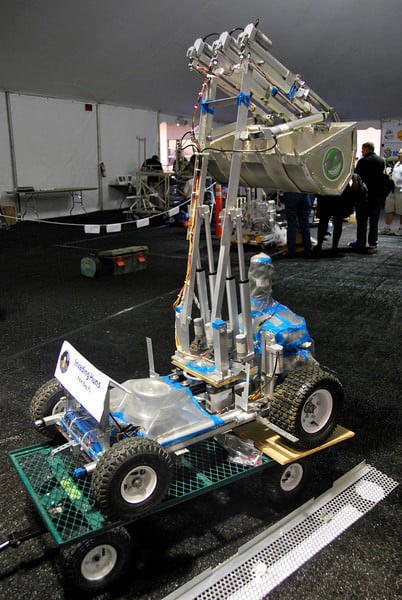[/caption] It was a busy weekend in the world of space flight -- both present and future -- and so we'll try to fit it all in one article, and include a couple of videos to help tell the stories. Before that, however, just a reminder that the Ares-I-X is slated to roll out to launchpad 39-B early Tuesday morning at 12:01 am EDT, to begin preparations for the scheduled Oct. 27 first test launch. If you're an early bird, (or a night owl) watch the six-hour trip on
NASA TV
.
And now on to this weekend's launch story:
The 600th launch of an Atlas rocket took place on a foggy Sunday morning, Oct. 18, from Vandenberg Air Force Base in California. A new global weather observatory (DMSP F-18) for America's military was lofted into polar orbit. Watch the video below, and
click here
to watch a video of the Centaur upper stage which created a sensation as it flew over Europe later in the day when it dumped a load of excess propellant.
On Saturday, Oct. 17, A Progress cargo spacecraft, delivering 2.5 tons of supplies, successfully docked to the space station at 9:40 pm EDT. Here's the video replay of that event from NASA TV:
Also on Sunday, nineteen teams pushed their robot competitors to the limit, and three teams claimed a total of $750,000 in NASA prizes at this year's Regolith Excavation Challenge on Oct. 18. This is the first time in the competition's three-year history that any team qualified for a cash prize, the largest NASA has awarded to date.
After two days of intense competition hosted at NASA's Ames Research Center at Moffett Field, Calif., organizers conferred first place prize of $500,000 to Paul's Robotics of Worcester, Mass. Terra Engineering of Gardena, Calif., was a three-time returning competitor and was awarded second place prize of $150,000, and Team Braundo of Rancho Palos Verde, Calif., took the third place of $100,000 as a first-time competitor.
Competitors were required to use mobile, robotic digging machines capable of excavating at least 330 pounds of simulated moon dirt, known as regolith, and depositing it into a container in 30 minutes or less. The rules required the remotely controlled vehicles to contain their own power sources and weigh no more than 176 pounds.
Read more about the competition
here,
and see lots more images and videos of the event here.
 Universe Today
Universe Today
